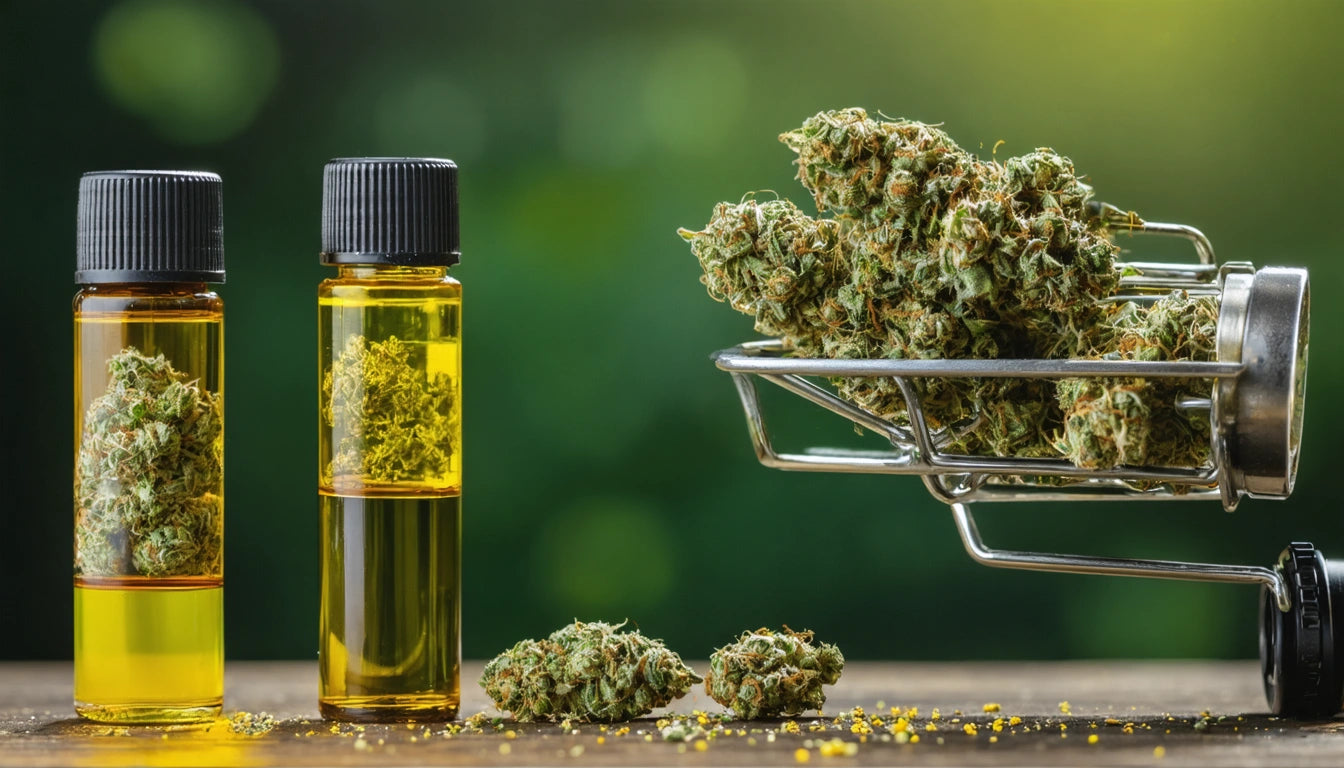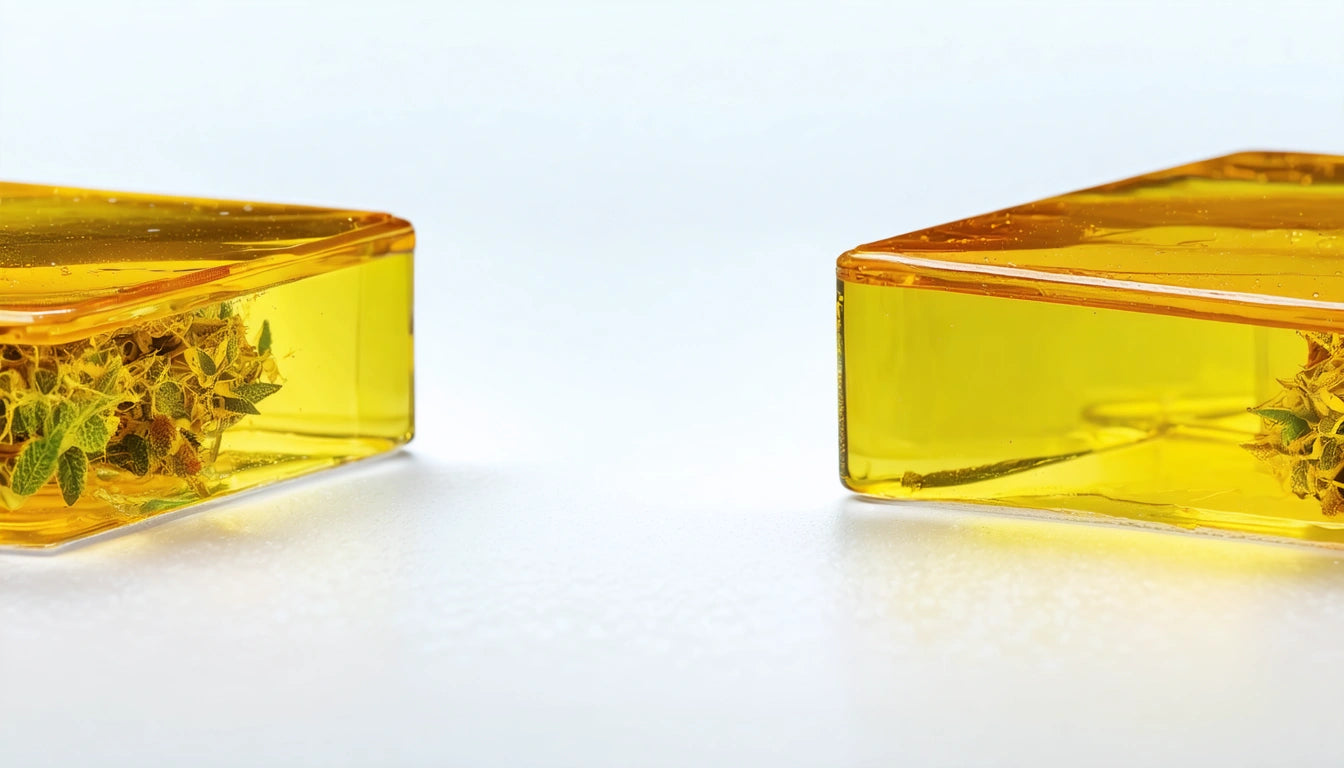Table of Contents
Cannabis concentrates represent a significant investment for both consumers and businesses. Understanding their shelf life and degradation patterns is essential for maintaining product quality and value. While concentrates don't technically "expire" like food products, they do undergo chemical changes that affect potency, flavor, and consistency over time.
Understanding Cannabis Concentrate Degradation
Cannabis concentrates contain cannabinoids, terpenes, and other compounds that naturally degrade through chemical processes. THC, the primary psychoactive compound, gradually converts to CBN (cannabinol) when exposed to oxygen, heat, or light. This conversion results in a less potent product with different effects, typically more sedative and less psychoactive.
Unlike food products that become unsafe to consume after expiration, properly stored concentrates rarely become harmful. Instead, they lose desirable qualities and potency. Most concentrates maintain optimal quality for 6-12 months, though this varies significantly based on storage conditions and extract type.
Factors Affecting Concentrate Shelf Life
Environmental Conditions
Four primary environmental factors accelerate concentrate degradation:
- Heat: Temperatures above 70 °F accelerate cannabinoid degradation
- Light: UV exposure breaks down cannabinoids and terpenes
- Oxygen: Air exposure speeds oxidation processes
- Humidity: Excessive moisture can introduce mold and bacterial growth
As detailed in our guide on preserving concentrate potency, controlling these factors can significantly extend shelf life.
Extraction Method
The production process significantly impacts stability. Solventless extracts like rosin often degrade faster than BHO products due to their minimal processing and higher plant lipid content. Conversely, highly refined products like distillate and isolate typically have longer shelf lives due to fewer degradable compounds.
Signs Your Concentrates Have Degraded
Recognizing degradation helps determine if concentrates remain suitable for consumption:
- Color changes: Darkening or browning indicates oxidation
- Texture alterations: Drying, crumbling, or increased stickiness
- Aroma loss: Diminished terpene profile and scent
- Taste changes: Harsh, flat, or unpleasant flavors
- Reduced effects: Less potent or altered experience
These changes don't necessarily make concentrates unusable but signal diminished quality. Products showing mold growth or unusual discoloration should be discarded for safety.
Optimal Storage Methods for Concentrates
Proper storage dramatically extends concentrate shelf life. Recommended approaches include:
Temperature Control
Refrigeration (36-46 °F) slows degradation processes substantially. For long-term storage, freezing is ideal for most concentrate types. Always allow products to reach room temperature before opening containers to prevent condensation.
Air-Tight Containers
Silicone containers work well for short-term storage of sticky concentrates, while glass or PTFE (polytetrafluoroethylene) containers provide superior long-term protection. Vacuum-sealed options offer additional protection against oxidation.
For maintaining ideal humidity levels, many concentrate enthusiasts use humidity control packs to create the perfect microclimate inside storage containers, preserving terpene profiles and preventing moisture-related issues.
Shelf Life by Concentrate Type
Different concentrate varieties have varying shelf lives due to their composition and consistency:
- Shatter: 6-12 months when properly stored; tends to sugar up over time
- Wax/Budder: 3-6 months before significant degradation
- Live Resin: 6-12 months with proper refrigeration
- Rosin: 3-6 months due to minimal processing and higher lipid content
- Distillate: 1-2 years when protected from light and heat
- Hash: 6-12 months when kept cool and dry
These timeframes assume optimal storage conditions. Improper storage can reduce shelf life by 50% or more.
Preserving Potency and Extending Longevity
Beyond basic storage principles, several strategies can maximize concentrate longevity:
- Portion control: Divide bulk purchases into smaller containers to minimize air exposure
- Dark storage: Use opaque or amber containers to block light
- Handle minimally: Reduce exposure by handling only when necessary
- Dedicated tools: Use separate dabbing tools for different concentrates to prevent cross-contamination
For commercial operations, implementing proper inventory rotation systems and educating staff about storage protocols can significantly reduce product loss and maintain consistent quality for customers.
While concentrates do degrade over time, understanding these principles allows both consumers and businesses to maximize the lifespan of these valuable cannabis products. With proper storage techniques, you can ensure your concentrates maintain their potency, flavor profile, and overall quality for months or even years.











Leave a comment
All comments are moderated before being published.
This site is protected by hCaptcha and the hCaptcha Privacy Policy and Terms of Service apply.